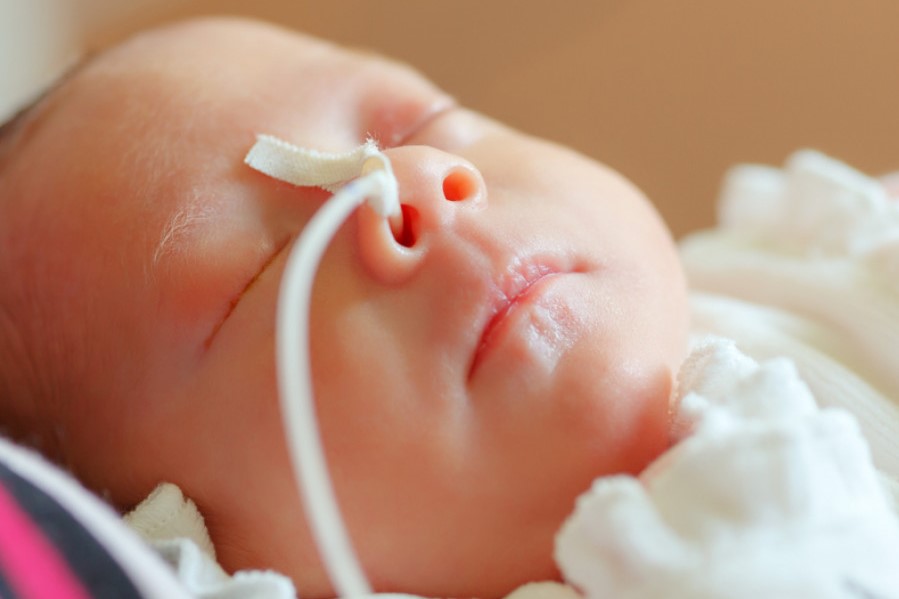
Neonatal respiratory distress: factors to take into account
Prematurity is the single most common factor in respiratory distress or cyanosis of the neonate and occurs most frequently in infants < 1200 grams and 30 weeks of gestation
Premature infants have an immature central respiratory control center and are easily affected by environmental or metabolic changes.
Risk of neonatal respiratory distress or cyanosis is increased during multiple gestations and prenatal maternal complications, only because the risk of pre-term delivery increases with these conditions.
Neonatal respiratory distress or cyanosis can also be caused by
- lung or heart disease,
- primary pulmonary hypertension,
- CNS disorders,
- mucus obstruction of nasal passages,
- spontaneous pneumothorax,
- meconium aspiration,
- amniotic fluid aspiration,
- lung immaturity,
- pneumonia,
- shock and sepsis,
- metabolic acidosis,
- diaphragmatic hernia, and
- tracheoesophageal fistula.
Neonatal respiratory distress or cyanosis can lead to
- cardiac arrest,
- permanent neurological damage, or
- death.
Assessment
Assessment findings during neonatal respiratory distress or cyanosis include
- tachypnea,
- paradoxical breathing,
- intercostal retractions,
- nasal flaring,
- expiratory grunting, and
- choking, gagging, or cyanosis with feeding.
Management considerations of neonatal respiratory distress or cyanosis include
- support the ABC’s with adequate oxygenation and
- maintenance of patent airway; as well as the
- initiation of chest compressions with indicated.
Pharmacological interventions include oxygen and cardiac medications when indicated.
Read Also:
Emergency Live Even More…Live: Download The New Free App Of Your Newspaper For IOS And Android
Resuscitation Manoeuvres: Cardiac Massage On Children
Emergency-Urgency Interventions: Management Of Labor Complications
What Is Transient Tachypnoea Of The Newborn, Or Neonatal Wet Lung Syndrome?
Tachypnoea: Meaning And Pathologies Associated With Increased Frequency Of Respiratory Acts
Postpartum Depression: How To Recognise The First Symptoms And Overcome It
Postpartum Psychosis: Knowing It To Know How To Deal With It
Clinical Review: Acute Respiratory Distress Syndrome
Seizures In The Neonate: An Emergency That Needs To Be Addressed
Stress And Distress During Pregnancy: How To Protect Both Mother And Child
Respiratory Distress: What Are The Signs Of Respiratory Distress In Newborns?
Respiratory Distress Syndrome (ARDS): Therapy, Mechanical Ventilation, Monitoring
Childbirth And Emergency: Postpartum Complications


